Claim to Frame: Brazilian designer Rodrigo Almeida
Scritto da Frame Publishers
Paesi Bassi
05.08.15
Brazilian design used to be all about the Campanas. Rodrigo Almeida is part of an emerging generation that’s redefining its roots.
São Paulo-based Rodrigo Almeida has a body of sculptural furniture and objects that references Brazil.
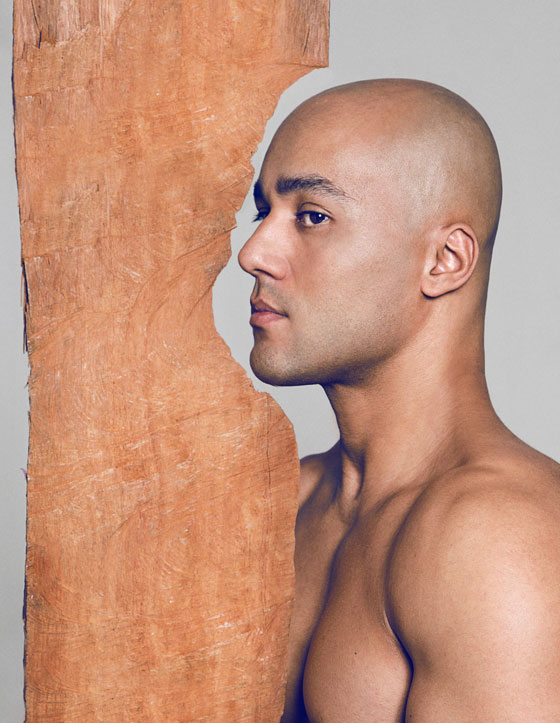
São Paulo-based Rodrigo Almeida has a body of sculptural furniture and objects that references Brazil.
×It’s the middle of the day in São Paulo, and no doubt pleasantly warm. I’m on Skype with Rodrigo Almeida, talking about the hows and whys of his titillating work. Many of my questions go phut almost before he’s heard them, despite Almeida’s friendly attempts to come up with good answers. Later I realize that the problem probably lay in my European manner of looking at, translating and analysing his sizable output. Nevertheless, it’s precisely that exotic, blended and relatively young Brazilian culture – with its own ways of making, communicating and manoeuvring – that I find so riveting in Almeida’s work.
His eclectic portfolio reveals a fearless designer who forages streets and rummages in (carnival) shops and hardware stores in search of everything from foodstuffs and feathers to nylon thread, which he combines – seemingly with ease and often by hand – to make something new. Along the way he’s developed his own signature, which is based on local ingredients from the ‘indigenous, Portuguese and African melting pot’ that is Brazil. A signature not without ambiguity. The layers of his hybrid pieces run the gamut of history, culture and emotion – and beyond. You read them as stories in which facets of daily life merge to become an object with a completely personal, totally new meaning. ‘Miscegenation is one of the most important pillars of my work.’
Your portfolio features more storytelling objects than functional designs. Do you feel more akin to a craftsman, an artist or a designer?
RODRIGO ALMEIDA: I’m a furniture designer, but I’d prefer to be seen as an object designer. During the first years of my career, my main concern was creating some sort of vocabulary that could be applied to a broad range of objects. I try to work across all levels of the industry, making everything from limited editions and one-off pieces to mass-produced designs. In fact, I’m currently working on a sanitary collection for a Brazilian manufacturer.
The Dragonfly cabinet is constructed from wood, steel and fabric. Almeida describes the same series as his ‘allegorical look at Art Nouveau and 1980s Japanese fashion’.
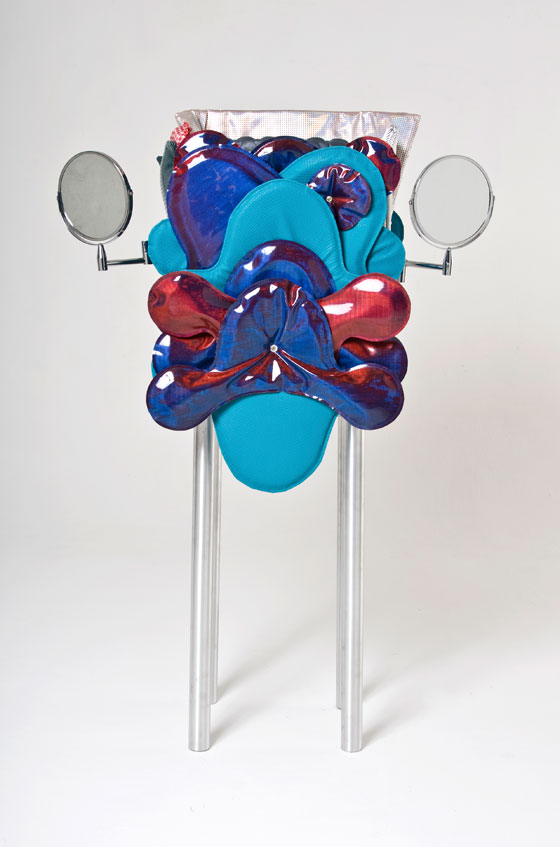
The Dragonfly cabinet is constructed from wood, steel and fabric. Almeida describes the same series as his ‘allegorical look at Art Nouveau and 1980s Japanese fashion’.
×You tend to transform existing values and traditions into new objects that have a life of their own. What do you look for?
While that’s a very intangible question, it’s also a central element in my work. I intuitively try to make objects with some kind of a soul – an aesthetic atmosphere derived from, and created for, the way Brazilians live and behave. Here lies the challenge: how do I transform that into an object? What could an Afro-Brazilian chair be? What does an industrial-design collection imbued with carnival references look like? To achieve the answers – the results I’m looking for – I make up stories, which become images that I shape into objects. Each piece is like a character.
If I have fewer visual resources with which to tell a story, I focus on the idea. I then look for a poetic response that quickly communicates that idea. My objective has always been to make something that is suspended in time. I try to avoid the obvious, thus avoiding disposability.
Named after what Almeida calls ‘poor construction in Brazil’, the Barraco chair was ‘inspired by random chaotic forms that create an aesthetic beyond poverty’. It represents man’s ability to make his ‘own cocoon and armour from fragments’.

Named after what Almeida calls ‘poor construction in Brazil’, the Barraco chair was ‘inspired by random chaotic forms that create an aesthetic beyond poverty’. It represents man’s ability to make his ‘own cocoon and armour from fragments’.
×Which is probably why your work is so arresting and engaging. Although ‘fast’ doesn't sync with the cliché of a Brazilian, does it?
I work very fast. And a lot. I’m a true workaholic. You know, for a long time my work wasn’t taken seriously. But that seems to be the historical path that every artist treads. The positive side of such a solitary path is that I’ve always looked for my own truth.
I’ve been working a lot with mirrors under the theme of vanity,’ says Almeida. Broken Mirror combines reflective shards and fragments with make-up mirrors.
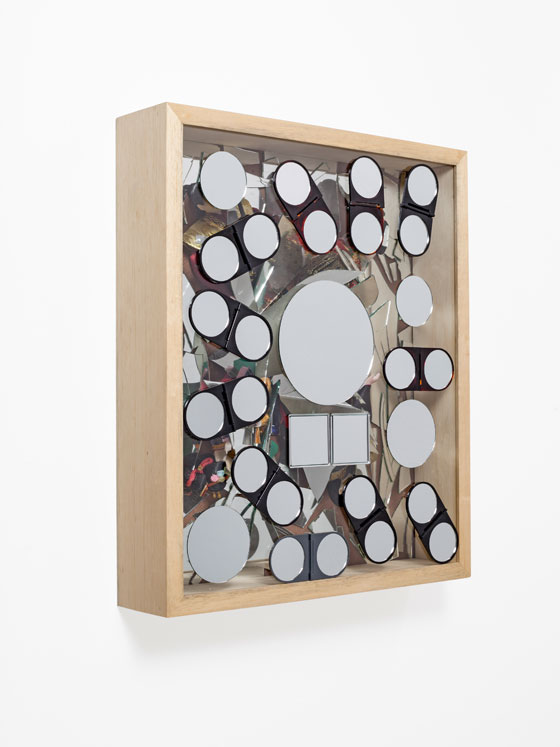
I’ve been working a lot with mirrors under the theme of vanity,’ says Almeida. Broken Mirror combines reflective shards and fragments with make-up mirrors.
×Do you think self-reflection is a priority for the designer?
The most fascinating thing about artistic production is that everything can be subverted. An unbreakable ideology is central to being a good designer.
Almeida’s interpretation of traditional Brazilian footwear is Xôboi, a project based on a contemporary sneaker to which he added street art-inspired colours, handcrafted leather, motifs from Brazil and Africa, and soccer-sole studs.
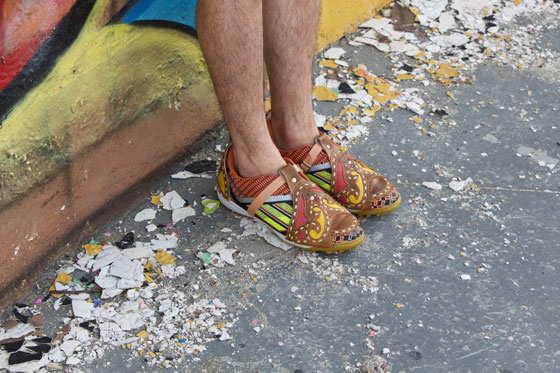
Almeida’s interpretation of traditional Brazilian footwear is Xôboi, a project based on a contemporary sneaker to which he added street art-inspired colours, handcrafted leather, motifs from Brazil and Africa, and soccer-sole studs.
×Is it important to you that people can use your designs?
Yes, but I haven’t achieved that yet. Some of my clients are Brazilians, but they live in expensive international homes. Design is still pretty much an elite affair. I’d like to develop more accessible objects that are neither disposable nor inferior.
Tupã – a lamp made from coconut fibre, bamboo and mirror – fuses indigenous Brazilian and Afro elements.
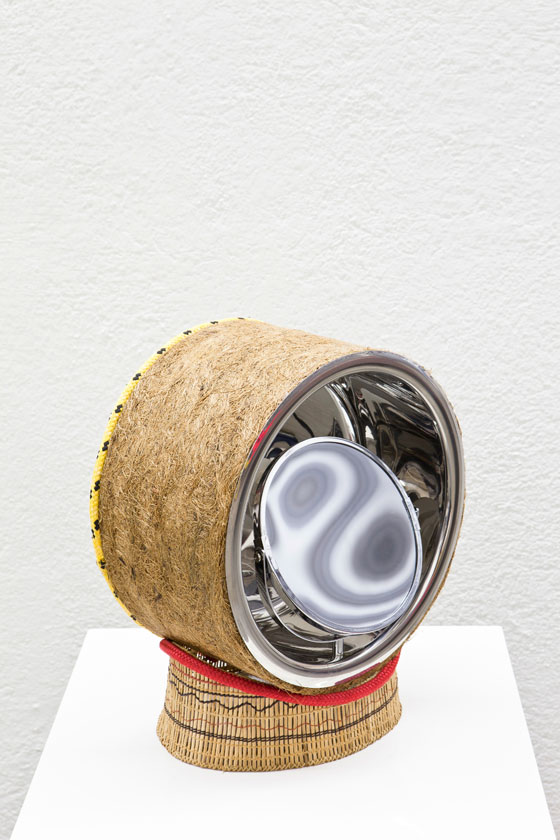
Tupã – a lamp made from coconut fibre, bamboo and mirror – fuses indigenous Brazilian and Afro elements.
×What’s the status quo of Brazilian design today?
Brazil has changed a lot over the past ten years. Consider this: Brazil lacks a traditional history of object design like you have in Europe. We have pre-craftsmanship, in the sense of formal object-making, but it never evolved into a sophisticated school that could have influenced our design industry.
When the Campana brothers entered the design realm over two decades ago, the gap between industry and craftsmanship started to fade. Their work is a historical bridge in that sense; they invented contemporary Brazilian design.
I belong to a post-Campana generation that, thanks to online information and communication, feels less isolated and, more importantly, has access to European production facilities. Greater openness has helped to overcome psychological barriers.
Nowadays, Brazil has a thriving design scene. With the real-estate boom, the home became a status symbol worthy of investment. The market is still disorganized, but an interesting aspect of the Brazilian character is a natural flair for fantasy.





